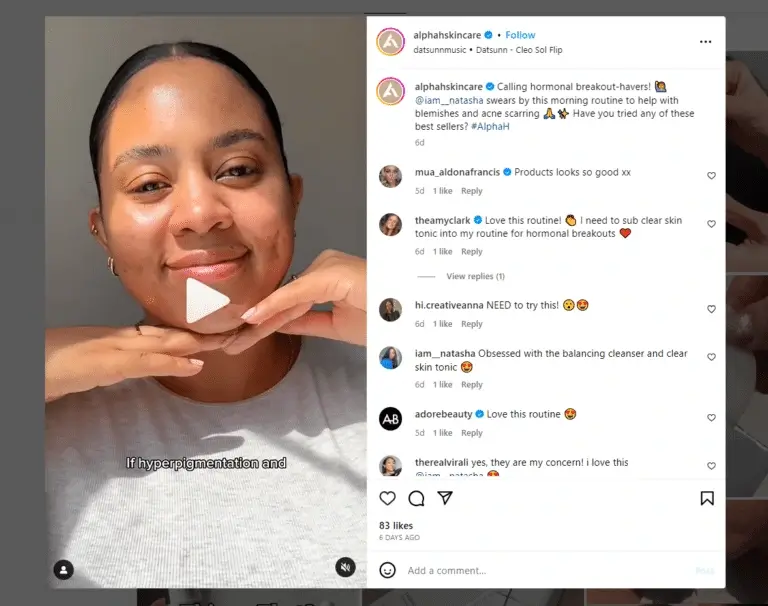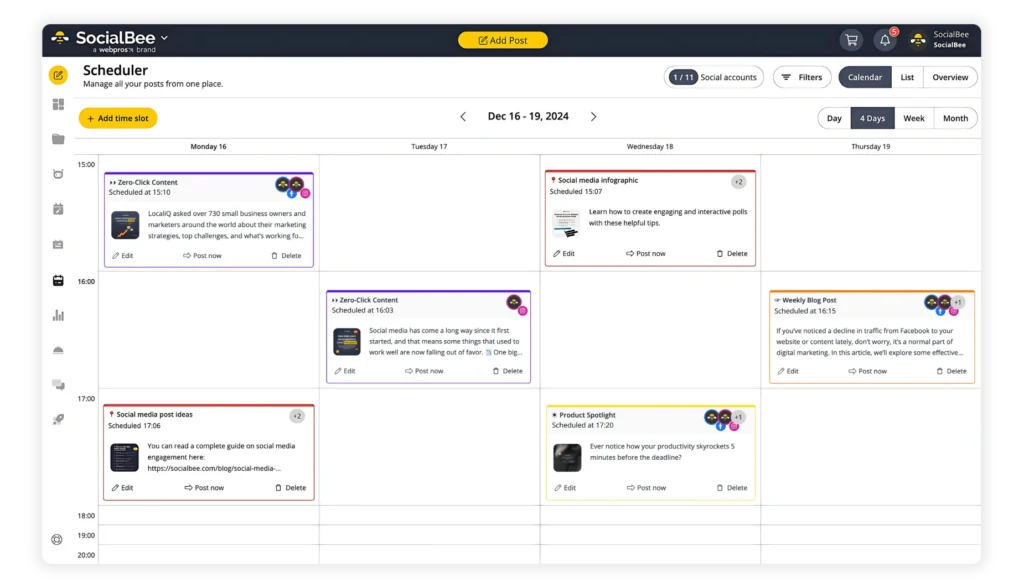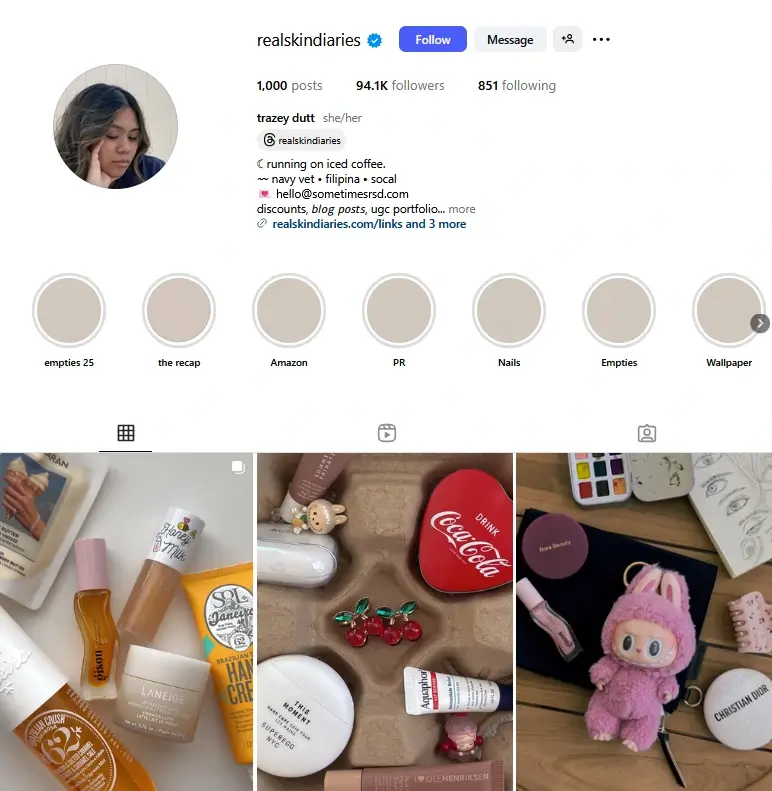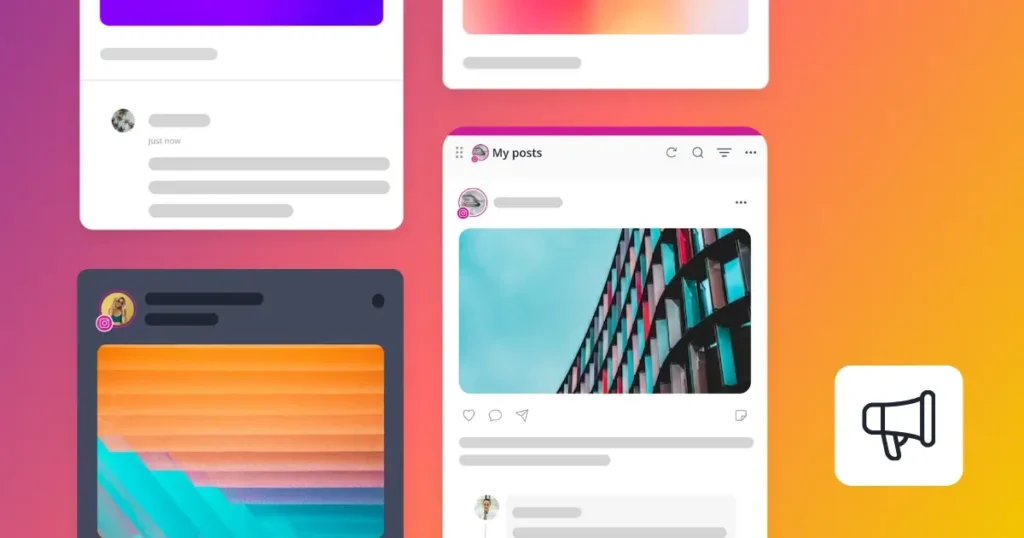
Content Writer at SocialBee
Businesses have long relied on influencers and brand ambassadors for that promotional push, but UGC creators are quickly claiming their spot.
At the moment, user-generated content (UGC) is a great option for creators seeking monetization opportunities and for brands aiming to tap into genuine, word-of-mouth marketing. In fact, the #UGCCreator hashtag already has over 1.7 million posts on TikTok, with its popularity continuing to grow.
Keep reading to learn the ropes of UGC creation and get all the tools you’ll need to get started.
We’re SocialBee LABS SRL, part of WebPros. We use the information you provide to share relevant content and product updates, as outlined in our Privacy Policy. You can opt out anytime.
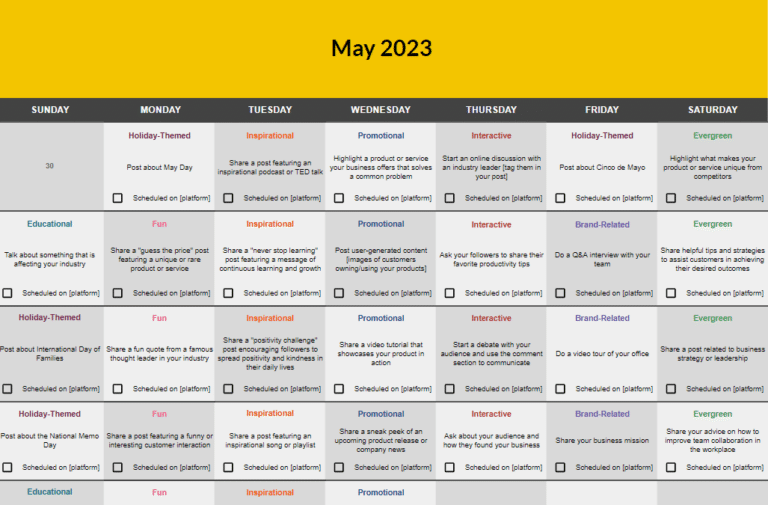
Short summary
- UGC creators are people who generate content in an authentic way for brands on various social media platforms. In exchange for their efforts, they receive incentives, such as financial compensation or complimentary products and services.
- UGC creators and influencers have different roles in the digital marketing industry. Influencers are paid to promote products on their own social channels and have a larger audience size. Meanwhile, UGC creators provide content directly to brands for their own channels.
- UGC posts tend to be more authentic and unpolished, even if they are paid collaborations, because they reflect the real experiences and perspectives of consumers.
- Businesses are aware of how influential UGC is in effectively promoting their products. That’s because, unlike traditional advertising, UGC establishes genuine connections with a broad range of audiences.
- To succeed as a UGC creator, post content from a specific niche you know well to stand out and attract brands in that area.
- Get quality gear like a good camera, microphone, and lighting to create professional content.
- Make a list of brands that match your niche and start connecting with them.
- Hone your skills in photography, video, and editing by practicing regularly.
- Create content with products you own to showcase your style and abilities to potential collaborators.
- Tailor your pitch to show how your content can help the brand meet its goals.
- Join UGC platforms like Trend or Insense to discover collaboration opportunities.
- Maintain active social media profiles to demonstrate your content style and attract brands.
- Gather feedback, research trends, and update your skills to stay relevant.
- Understand standard UGC rates so you can negotiate fair compensation for your work.
What is a UGC creator?
UGC stands for user-generated content, and UGC creators are people who create authentic-looking posts for brands on various social media platforms. In exchange for their efforts, user-generated content creators receive incentives, such as financial compensation or free products and services.
Unlike professionals tied to established media outlets or organizations, UGC creators rely on their ingenuity, talents, and knowledge to regularly produce captivating and relatable content that connects on a core level with their audience.
User-generated content (UGC) helps brands promote their products or services. Testimonials, instructional guides, unboxing videos, reviews, and demonstrations are some of the most popular among other forms of UGC.
What is the difference between traditional influencers and UGC creators?
UGC creators and influencers play different roles in content marketing. While influencers are often paid to promote products on their own social media channels and have a wider audience reach, UGC creators provide content directly to brands for their marketing channels. Traditional UGC is generally unpaid, but brands now also have paid content from UGC creators.
Additionally, UGC content is often more authentic and less polished, reflecting the real experiences and perspectives of consumers. This makes sense because UGC creators come off as genuinely interested in the products they promote.
Here are the main differences between UGC creators and influencers:
- Influencers usually build a personal brand around a specific niche or lifestyle. UGC creators, on the other hand, often begin by simply sharing their personal experiences, without necessarily aiming to influence others right away.
- Influencers sometimes face doubts about how genuine their content is, especially when it’s sponsored. UGC creators tend to come across as more authentic because their content usually comes from real, everyday experiences.
- Most often, UGC creators get paid to make content that brands use in their own marketing. They don’t need a following of their own. Influencers make money by sharing branded content with their audience and relying on their reach to promote certain brands.
- Influencers attract followers who look up to them and their lifestyle. UGC creators connect by being relatable and sharing honest feedback.
- Influencers often have formal deals with brands. UGC creators usually begin with informal brand mentions that might turn into partnerships later.
- Influencers carefully plan and style their posts to fit their brand. UGC creators create content in a more natural, spontaneous way, showing real experiences as they happen.
- Working with UGC creators is more affordable because they are often everyday people who create content more organically and on a smaller scale, so they don’t rely on large followings to justify high prices like influencers do.
Why do brands hire UGC creators?
Although the concept of UGC creators is relatively new, traditional user-generated content (UGC) has been around for some time and has become an effective tool for social media strategies.
Given that increasing brand awareness and driving sales are valuable outcomes for businesses, it is not surprising that brands are willing to compensate many top creators for user-generated content.
Here are the main reasons why companies choose to work with UGC creators for brand promotion:
- User-generated content feels authentic
- UGC is an updated basic marketing strategy
- It helps brands expand their target audience
- It’s cheaper than influencer campaigns
A. User-generated content feels authentic
UGC is seen as 3 times more genuine than brand-created content by consumers, and for a good reason: it holds an authenticity that brands often find challenging to reproduce. This happens because many creators can promote products or services organically, all while focusing on what the brand’s target audience values most.
Here is an example of a UGC post from @L’Oréal’s TikTok account:
This is an ordinary beauty routine that you can replicate at home with L’Oréal products, making the brand feel more approachable compared to the high-budget ads with models and perfect lighting.
B. UGC is an updated basic marketing strategy
For the longest time, brands have used and monetized customer testimonials, case studies, and reviews in their marketing campaigns. We’ve all seen ads with everyday people sharing their honest opinions about a brand’s newest product.
Today, user-generated content is the latest version of this strategy. UGC provides businesses with genuine-looking content that acts as social proof, which is a powerful way to drive sales.
C. It helps brands expand their target audience
Businesses can use UGC to create authentic connections with audience demographics that would be difficult to reach through conventional marketing approaches. This is because content created organically demonstrates a brand’s significance and value within particular communities.
When potential customers seek feedback for a product and they see authentic content created by their peers, it builds trust and improves the brand’s reputation, as they perceive it as unbiased and reliable.
D. It’s cheaper than influencer campaigns
When working with influencers, brands must compensate them for both creating content and promoting it on their channels. The amount brands need to pay varies depending on the influencer’s reach and level of engagement, and can be in the millions.
On the other hand, UGC only requires payment for the content itself, which is often just as good as content created by influencers but much more affordable.
10 successful strategies to get started as a UGC creator
Let’s take a look at the top tips for becoming a UGC creator:
- Do your research
- Invest in equipment and build your setup
- Identify the brands you want to work with
- Practice creating UGC content
- Build your UGC portfolio
- Offer value when reaching out to brands
- Use platforms to find brand deals
- Build an online presence
- Improve and adapt consistently
- Know your worth
1. Do your research
Focusing on a specific niche is a great practice when creating user-generated content, as being highly knowledgeable about a particular topic makes you the right fit for the brands you want to work with.
While sticking to one category may limit the number of potential clients, working within a specific niche can bring credibility and expertise to the content you create.
To determine your niche, research popular content categories and identify gaps in the market. Look for brands that could benefit from a unique perspective on their product or industry. Also, pay attention to consumer behavior to understand what kind of UGC content would work best with your niche.
It’s important to choose a narrower topic that you excel in, yet is not overly saturated with competition. Here are some potential areas of interest that you can explore:
- Fitness & wellness: While this industry is quite broad, a great place to get started is to dive into specific fitness areas like low-impact workouts or daily exercise routines.
- Growth & career: If you excel in helping real people excel in their careers, boost productivity, structure their days, and prioritize tasks, this is the area where you can shine.
- Cooking: If cooking a good meal is your superpower, this niche can be your perfect match. Focus on a specific part of the culinary world, such as vegan cooking or creating diet-friendly meals.
- Books: Although it may seem unusual, there is a niche community for book lovers. The best way to go about it is to find groups where people chat about different books, authors, or genres, and use that knowledge to draw inspiration for your content.
- Beauty & skincare: If you’re knowledgeable about using different products or treatments or have a track record of addressing different skin issues, this niche might be it for you to make trusted recommendations.
- Fashion: The possibilities are endless in this niche, and if you have great taste in clothes or a unique style, you could put together outfits for every day or discuss seasonal fashion trends as a form of UGC content.
Check out this collaboration between @iam_natasha and @alphaskincare:
At first glance, it looks like an ordinary review from a satisfied customer, which is exactly what @alphaskincare was hoping to achieve through this partnership.
In reality, @iam_natasha partnered up with a brand that has a similar target audience and that aligns with her passions and expertise. Through her UGC, she provides descriptive, visually appealing step-by-step tutorials that showcase various products in action.
2. Invest in equipment and build your setup
UGC can be captured in various settings: outdoors or in the cozy confines of your own home. Countless UGC creators choose the latter since they can fine-tune their filming arrangements to perfection.
Gear-wise, there are several pieces of equipment you may want to consider as a UGC creator:
- A good camera
- Lighting
- A reliable microphone
- Various backdrops
- Additional props for video content
- A social media management platform
A. A good camera
Invest in a professional-grade camera or a good smartphone, since many of them have exceptional features and can outperform basic digital equipment.
B. Lighting
A ring light is more than enough for basic UGC creation, but if you want to become a pro, it can be beneficial to research more advanced lighting equipment.
C. A reliable microphone
Poor audio can ruin your UGC content, so if your phone’s recording feature doesn’t cut it, consider investing in a separate microphone or lavaliere.
D. Various backdrops
If the background in your clips is cluttered or distracting, it’s best to conceal it. You don’t always have to go for a plain, blank sheet as your backdrop. Instead, you can explore your creativity and use different fabrics or materials.
E. Additional props for video content
Props can help you tailor the content to your audience and also contribute to making a cohesive impression on your followers. Use them to set the scene and tell a story that fits the vibe of your content.
For example, style sunglasses on a table next to your product for a sunny, lifestyle feel, or pack your featured item into a travel bag to show how it fits into daily routines. Even a simple stack of books can add depth and personality to your shot while keeping the focus on the product.
F. A social media management platform
UGC creators often produce content for various social media platforms at the same time, and managing that much content at once without the right tools in place can create chaos. This is why you need to find an all-in-one social media management tool that will simplify your efforts to become a successful content creator.
SocialBee is a powerful tool for UGC creators who want to save time on their content strategy and stay organized. Manage multiple social media accounts from one dashboard, schedule posts in advance to keep your content consistent, and track performance with detailed analytics.
Easily engage with your audience, store and plan posts for a steady stream of content, and create stunning visuals with Canva integration. Plus, SocialBee’s AI content generator helps you overcome creative blocks with ready-to-use prompts.
3. Practice creating UGC content
Your first attempt at UGC creation may not be your best. Try to recreate the material you have gathered through research. If photography is your strong suit, focus on acquiring fundamental skills like mastering poses and set lighting.
If you want to create videos instead, refine your script delivery skills and familiarize yourself with various camera angles, transitions, and video editing techniques.
Expert tips on how to create UGC content from Dara Denney
Dara Denney is a standout Performance Creative Consultant, partnering with renowned brands to optimize their presence on online platforms like Facebook and TikTok Ads.
She is not only a behind-the-scenes strategist, but many also recognize Dara from her YouTube content filled with valuable insights.
In her video about how to create user-generated content, Dara Denney, with over eight years of experience in paid social media advertising and content creation, reveals the following seven expert tips:
- Use engaging hooks
- Use multiple captivating hooks to grab attention.
- Employ strategies like reverse loops, TikTok trends, post-it note responses, and bubbles.
- Incorporate surprising, outlandish, or oddly satisfying elements.
- Always create at least two different and engaging hooks.
- Make the most out of golden hour lighting
- Use the golden hour for optimal natural lighting.
- While artificial lights like ring lights are useful, natural golden hour lighting often looks best.
- Ensure that lighting complements the aesthetic of your content.
- Keep a clean background
- Avoid clutter and unnecessary items in the background.
- Ensure that the background is clean and aesthetically pleasing.
- Minimize background noise
- Turn off disruptive appliances like AC, fans, washers, and dryers.
- Consider outside noises if filming by a window.
- For voiceovers, use headphones with a built-in microphone. Earbuds with microphones are recommended.
- Present your best self
- Spend time on personal grooming: do your hair and makeup.
- Wearing outfits that boost confidence can result in better content performance. Presentability directly impacts content performance and client satisfaction.
- Include transitions
- Provide clients with a folder of transitions.
- Use camera movements to make content more dynamic, such as moving the camera closer or farther from the product.
- Focus on aesthetics
- Invest in backgrounds, props, and plants to improve the look of your content.
- Ensure content is visually appealing to keep clients satisfied.
4. Build your UGC portfolio
One of the essential steps for highlighting your skills as a UGC content creator and attracting potential clients is creating a portfolio. Companies are always looking for vetted creators, so showing what you can do is a must.
As a UGC creator, you have a lot of creative freedom. Remember to include a diverse range of work from your content library and adapt your portfolio to your target audience. Avoid overwhelming your portfolio with an excessive number of samples, as this can make it difficult to navigate.
To start creating a compelling portfolio, you need products to work with. However, brands usually only send products to individuals who already have a portfolio. Is there a way around this?
To create content featuring your favorite products without relying on brand permission or sponsorship, use products that you already have at home. Start recording videos or taking photos, and your portfolio will be ready to go in no time.
5. Identify the brands you want to work with
To achieve success as a UGC creator, effective networking and outreach are important. Interact with potential clients in places where they actively search for creators like yourself, such as LinkedIn, Twitter, and TikTok. You could also try outreach via email or direct messages, and some creators apply on freelancer platforms like Fiverr or Upwork.
For a proactive approach, use these platforms for outreach as a UGC creator:
- A. Personal branding: Share updates on your personal accounts, showcasing your journey as a UGC creator. Include a call-to-action that invites many brands to reach out to you for UGC collaborations.
- B. Cold outreach: Identify brands that genuinely resonate with you and that you would enjoy creating content for. Get in contact with employees from these companies and express your interest in creating content for them. Alternatively, try connecting with brands and fellow creators through other social media platforms and attending industry events.
PRO TIP: Smaller businesses that are only beginning to establish their presence on social media are more likely to require UGC services, especially since they need cost-effectiveness and can’t afford to collaborate with mega-influencers.
6. Offer value when reaching out to brands
With so many UGC creators, competition is tight. That’s why you must think of your pitch as a job application process.
When creating your content, emphasize the brand itself rather than focusing solely on yourself. Clearly illustrate the value you can offer to the brand through your UGC.
Additionally, customize your pitch for each specific opportunity you pursue. In your portfolio, curate relevant examples that align and resonate with the industry of the brand you are targeting and its audience.
Here is what your pitch should be like as a UGC creator to stand out:
- Direct and engaging: Grab attention immediately, eliminating unnecessary fluff and getting straight to the point.
- Evidence-based: By providing links to previous content and showcasing past results, you establish credibility and offer a tangible sense of the creator’s capabilities.
- Includes a tailored content sample: A sample tailored for the brand demonstrates the creator’s genuine interest and gives a practical glimpse of what the collaboration might look like.
- Outlines clear collaboration opportunities: Your pitch should lay out a structured proposal, detailing exactly what the partnership would entail, from product reviews to live interactions.
- Metrics & results: Highlighting specific metrics (like views, likes, shares, or audience engagement percentages) provides a quantifiable measure of success, making the collaboration’s potential value evident.
- Call to action: End with a clear invitation for the brand to connect, fostering immediate action.
- Professional yet enthusiastic tone: The tone should strike a balance between professionalism and genuine enthusiasm, portraying the UGC creator as both competent and passionate about the potential collaboration. Try to also match the company’s voice.
7. Use platforms to find brand deals
Cold outreach is when you contact someone you don’t know, like a brand or client, for the first time, usually to pitch a service or start a collaboration. It can be challenging because it often has low success rates, and it can be disheartening when your emails go unanswered.
But when you use the right cold outreach tools with the right strategy, you can obtain great results. Thankfully, there are specialized creator platforms available for those seeking UGC opportunities. Some of the top platforms include Trend, Influee, UGC Shop, and Insense.
8. Build an online presence
Having a compelling online presence plays an important role in client acquisition, so consider including an active Instagram or TikTok account in your portfolio.
Check out how @realskindiaries maintains a social media presence as a UGC creator:
When brands see how your preexisting content aligns with their specific niche and the social media users they’re targeting, they’re more likely to consider you for UGC creation.
9. Improve and adapt consistently
The only way to stay afloat in the UGC industry is to evaluate your performance consistently, gather constructive feedback from your audience, and work on refining your skills.
To stay adaptable, you must fully understand the specific needs and preferences of different brands through research and familiarizing yourself with certain concepts.
A. Research
Brands determine the strengths of a creator by assessing their portfolio and social media presence. This is why creators must ensure that a brand aligns with their passions and interests. Even if you have incoming clients by this point, keep up with industry-related knowledge and trends.
B. Campaign goals
Usually, brands will establish goals for each video, so creators can have clear directions. Depending on your niche, try to familiarize yourself with basic jargon, which will allow you to effectively communicate with the brand and tailor your content to meet those goals.
C. Clear deliverables
Both brands and creators need to establish clear expectations and outline deliverables. Brands should specify the desired content they expect from a creator, such as one TikTok video and an Instagram Reel. Make sure that it’s all in writing, ideally in the form of a contract.
10. Know your worth
Just like influencer marketing, the payment rates for UGC work can vary. Typically, it’s the brand or platform that determines the payment for brand deals. However, keep an eye out for the standard market rates and usage rights. This knowledge empowers you to select deals that offer fair compensation, which will benefit both you and other creators by ensuring equal pay.
Frequently asked questions
Becoming a UGC creator doesn’t require a specific number of followers. Quite a few UGC brand partnerships solely focus on creating and providing high-quality content, without demanding you to share it on your channels.
UGC is a fantastic opportunity for you to make some extra cash or even transform it into a fulfilling career.
Unlike traditional employment, content creators enjoy greater autonomy in terms of the content they produce and how they profit from it.
To identify UGC creator jobs, you must interact with your specific niche, sign up on influencer marketing platforms, and join various social media groups.
Additionally, you can connect with brands directly by promoting your skills and presenting your portfolio. Lastly, consider teaming up with fellow content creators to explore promising collaboration opportunities.
As a creator of user-generated content (UGC), how much you charge depends on your specific area and level of expertise, engagement rates, and the extent of a project.
The cost of user-generated content (UGC) typically ranges between $150–$300 per video. However, there are creators who charge much higher rates, or substantially lower ones.
Analyze industry rates, assess your worth, and take into account the financial resources of the brand in question to establish a reasonable fee. While it’s wise to be open to negotiation, you must strike a balance between setting competitive prices and ensuring fair payment for your hard work.
Begin your UGC creation journey today
In this article, we discussed the benefits of user-generated content and shared our tips for becoming a creator.
If you want to express yourself freely, connect with a vibrant UGC community, and put your ideas and talent to work, all you need to do is grab your camera and follow our guide.
To take things one step further and make UGC content creation even easier, check out SocialBee, the one-stop social media management platform that helps you create, schedule, and post your content. Start your 14-day free SocialBee trial today!
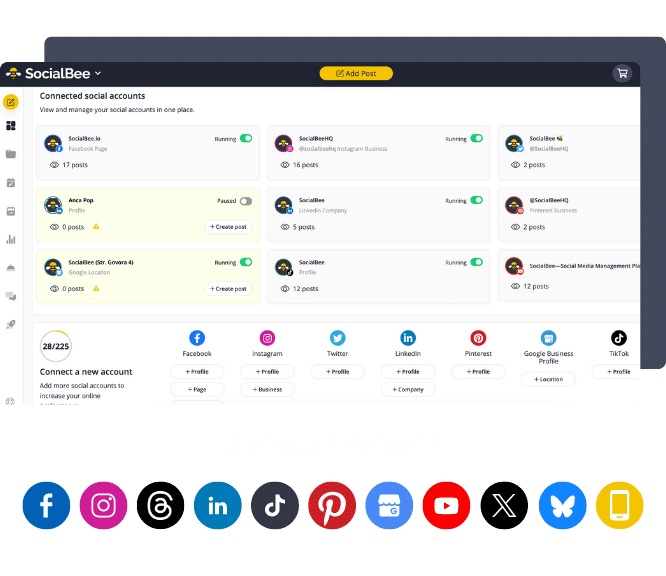
Create posts, publish, analyze, engage and collaborate, all from SocialBee.


